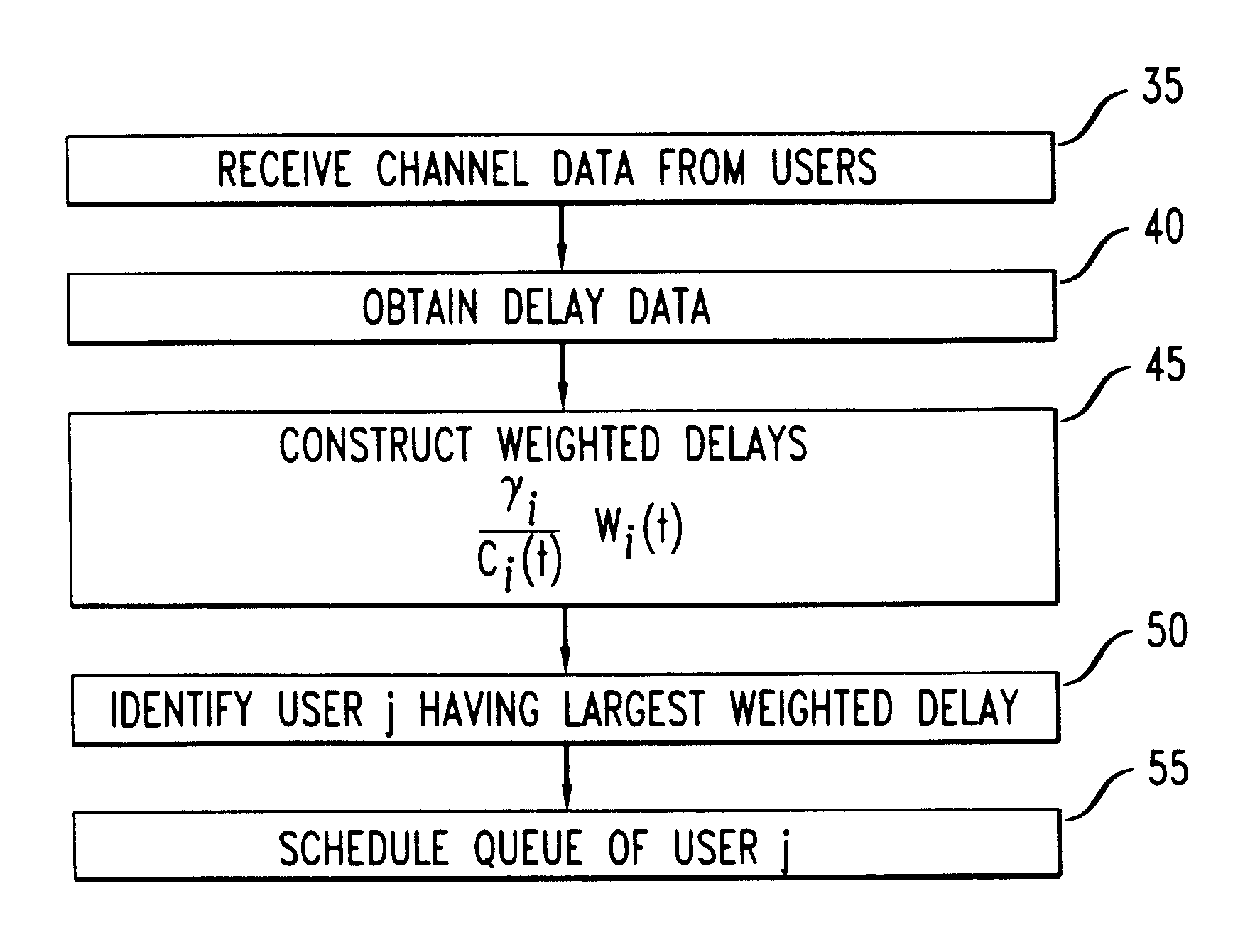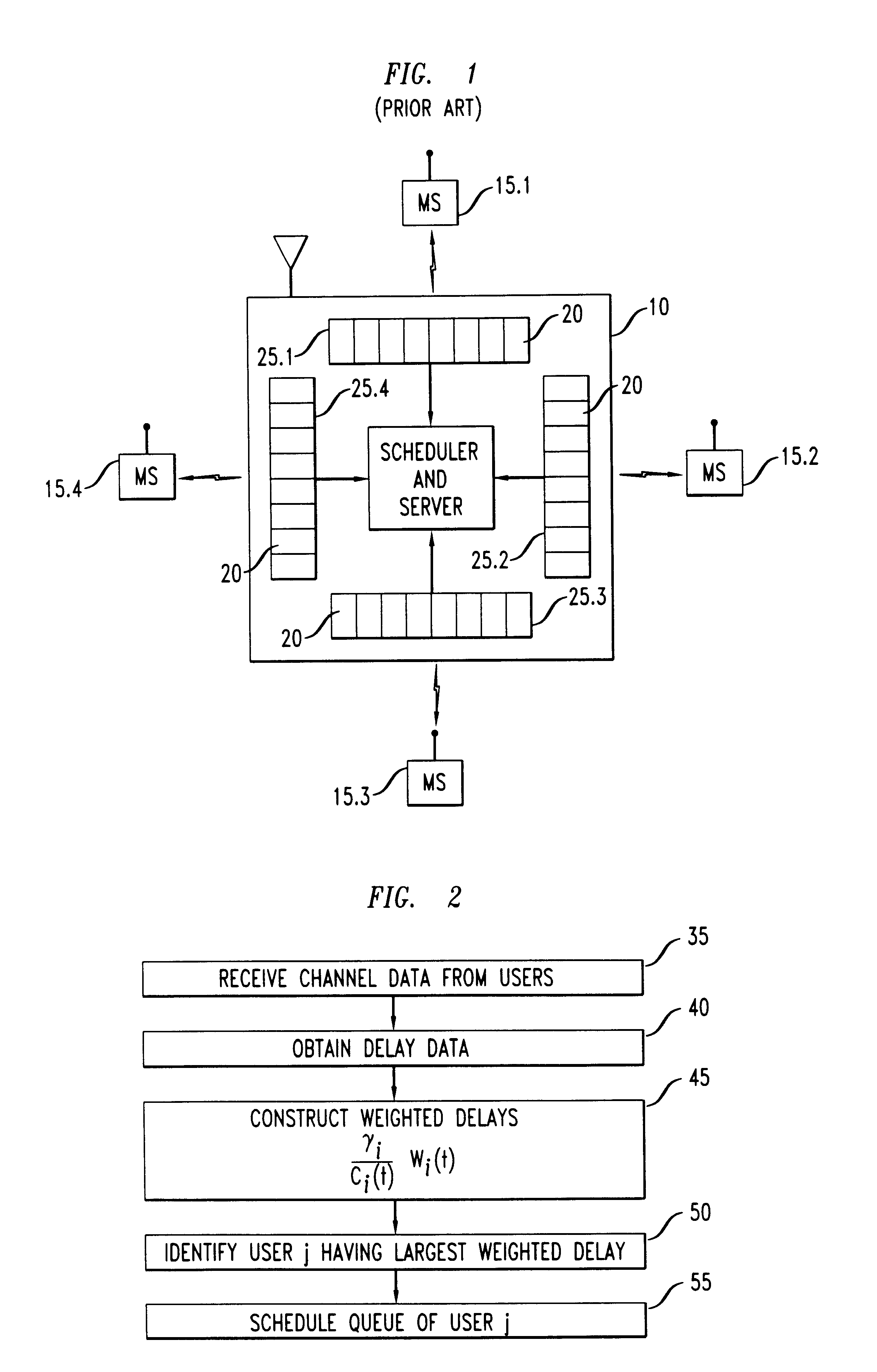Method of packet scheduling, with improved delay performance, for wireless networks
a packet scheduling and delay performance technology, applied in the field of wireless network packet scheduling, with improved delay performance, can solve the problems of increasing the likelihood of serving the pertinent queue, increasing the probability of packet age or channel quality, and low probability of queue delay exceeding a threshold
- Summary
- Abstract
- Description
- Claims
- Application Information
AI Technical Summary
Problems solved by technology
Method used
Image
Examples
Embodiment Construction
We performed a series of numerical simulations of a model CDMA cell to determine the delay distribution for selected users under the known LWDF discipline, and under several alternate embodiments of our new M-LWDF discipline. The model cell contained sixteen users uniformly distributed within the cell. The weights {c.sub.i } for the respective users are listed in Table 1. The traffic for each mobile was generated by an on-off source, with on and off periods independent and exponentially distributed with means 93 ms and 907 ms, respectively. When the source was on, the (Poisson) flow of packets was generated at the rate of 9 packets per second. The packet sizes were independent and exponentially distributed. The load of the system was adjusted by changing the mean packet size. The delay threshold T.sub.i was set to 3 s for the eight "close" users, i.e. those with the smaller c.sub.i, and T.sub.i was set to 7 s for the eight "far" users, i.e., those with the greater c.sub.i. The viola...
PUM
 Login to View More
Login to View More Abstract
Description
Claims
Application Information
 Login to View More
Login to View More - R&D
- Intellectual Property
- Life Sciences
- Materials
- Tech Scout
- Unparalleled Data Quality
- Higher Quality Content
- 60% Fewer Hallucinations
Browse by: Latest US Patents, China's latest patents, Technical Efficacy Thesaurus, Application Domain, Technology Topic, Popular Technical Reports.
© 2025 PatSnap. All rights reserved.Legal|Privacy policy|Modern Slavery Act Transparency Statement|Sitemap|About US| Contact US: help@patsnap.com



